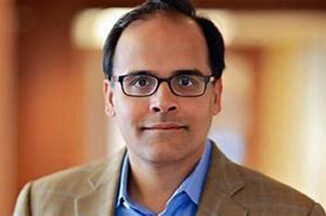

When New York City voters go to the polls on June 22 to select their party’s nominees in City elections, they will fill out a new kind of ballot that allows them to pick up to five candidates in order of preference in a system known as Ranked Choice Voting.
Is Ranked Choice voting complicated? Well, yes and no. If you think it’s a new thing which you cannot understand, you will not try to understand it and it will be complicated for you. But, if you think it is something new and you should try to understand, you will find it not so complicated.
Let us know, in very simple words, what Ranked Choice Voting is.
In primary and special elections for New York city offices, you can now rank up to five candidates in order of preference instead of choosing just one.
Ballots are tabulated in what may best be described as a series of instant runoffs. In the first round, if any candidate receives 50% or the vote, he or she is declared the winner, and the election is over.
If not, the candidate who finished in last place is eliminated, and any ballots that had him or her as the top choice are reallocated to the No. 2 candidate on each ballot. The votes are counted once again. If no candidate has yet reached 50%, the candidate in last place is eliminated, and his or her ballots reallocated, and so on, until someone exceeds 50%.
I asked my friend Mr. George Abraham, a voter in Queens, to share with our readers what he thinks of the Ranked Choice system.
This is what he said, “Ranked-choice works by having you rank your top five candidates. If no candidate receives 50% of the vote, then the person with the least number of votes will be eliminated. Those who had listed the eliminated candidate as their first choice will then have their vote go to their second choice. This process will continue until a candidate reaches 50% of the vote.
The system has been used for years in places like San Francisco, Minneapolis, and Oakland. Since most voters in the City are Democrats, the ranked-choice vote is almost certain to play a crucial role in the NYC elections. In the past, close contests were decided by run-offs if none of the candidates received at least 40% of the vote.”
Please keep in mind that you are under no compulsion to indicate all 5 choices. You can still vote for just your 1st-choice candidate. However, ranking other candidates does not harm your 1st choice. If your 1st and only choice is eliminated, your vote will have no influence on the outcome of the election.
Remember, you cannot rank your preferred candidate more than once (for example as your 1st, 2nd, 3rd, 4th, and 5th choice), then only your first ranking will count. There is no strategic benefit to giving the same candidate multiple rankings.
Let us have a look at the benefits of Ranked Choice Voting.
There are several ways that Ranked Choice Voting could benefit voters.
One, it gives you more say in who gets elected. Even if your top choice candidate does not win, you can still help choose who does.
Two, it gives you more choices. You can rank up to five candidates, allowing you to support your favorite candidate without worrying about whether they’re likely to win.
Three, more diverse candidates win elections. Cities that have implemented Ranked Choice Voting have elected more women and more women of color, making their elected officials more representative of their communities.
However, city voters have expressed concerns, too.
Mr. George Abraham says, “One of the concerns expressed by many is that when the actual results will be made available. It is believed that there is a tabulation software that will be counting the votes, and the officials are expected to release the unofficial first-round results quickly. However, results may not be known for weeks due to delay in counting the absentee ballots. With the ranked-choice voting, the first-round winner may take little comfort knowing fully well that second choice accumulation of votes for another candidate could spell trouble for his/her real chances”.
NYC will only use Ranked Choice Voting in primary and special elections for the following city offices:
- Mayor
- Public Advocate
- Comptroller
- Borough President
- City Council
Remember the following key dates.
Early Voting: Sat, June 12, 2021 – Sun, June 20, 2021
Absentee ballot request deadline: Tue, June 15, 2021
Primary Election Day: Tue, June 22, 2021
Deadline to return absentee ballot: Tue, June 22, 2021
(Author is chief editor of The Indian Panorama)





760508 690602I like this weblog so considerably, saved to my bookmarks . 748012